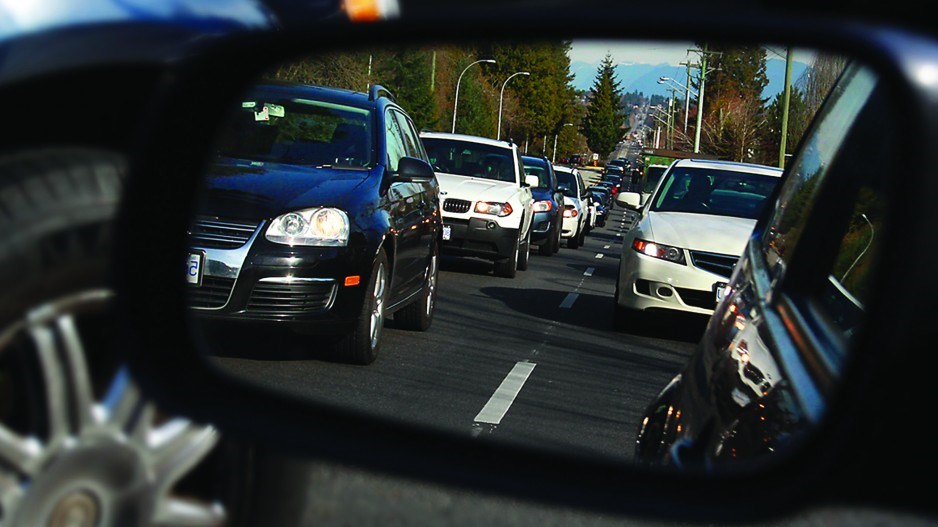It’s barely rush hour, and traffic at the corner of Highway 10 and 152 Street in Surrey is backed up in all directions. Cars inch up to the stoplight, vehicles crawl through the intersection as everything moves painfully slowly. Southeast of the Vancouver-Blaine Highway, at 152 Street and the 32 Avenue Diversion, it’s the same story – cars wait multiple lights to make it through the crossroads. Gridlock is a daily occurrence in areas like South Surrey, Newton, Clayton and Cloverdale, and across the city as a whole rush hour is now crippling the city’s transportation grid.
While the coming transit plebiscite has focused attention on Vancouver’s traffic needs, Surrey faces an equally tough road when it comes to alleviating congestion. When the southern portion of the city started to fill out, much planning went into making sure new communities were transit-friendly. In 1999, Surrey’s department of planning and development inked a partnership agreement with the University of British Columbia, the Pacific Resources Centre and a multi-constituent advisory committee involving multiple levels of government to create the Headwaters Project for the South Clayton area. The idea was to build a sustainable community through such initiatives as increased density, making for a more pedestrian-friendly zone of residential and commercial properties. But the plan hinged on better transit, which never came to fruition, said Jaime Boan, the City of Surrey engineering department’s manager of transportation. “We’re still seeing too many people driving there, and it’s because we haven’t had the bus service. It was envisioned to have very good bus service given the density that was put in. However, because TransLink hasn’t had the money available, that service has not been realized. So that again comes back to this referendum.” Over in Fraser Heights, it is a different story. A few years ago the bus service in the area was “poor,” Boan said, with buses running through every half- hour. A community shuttle was introduced, which came every 15 minutes, and ridership shot up. That shuttle became a bus, and ridership to this day is still high. “So there’s no question this region has an appetite for this type of transit,” he added, noting 80% of people in Surrey rely on cars for work-related transportation, a proportion that is above the regional average. “And when quality service is provided they’re making use of it.” While public transportation in North Surrey has improved, inadequate transit and gridlock in the southern part of the city is forcing developers to take a different approach to building. Right now Mosaic Homes’ Clayton Market, located on the corner of the Fraser Highway and 64 Avenue, is selling. Andrea Camp, senior vice-president of sales for Mosaic Homes, said creating a “walkable” community was a top priority given the nature of the area. “What you don’t want is for it to look like a strip mall,” she added. “What you also don’t want is for it to look like it just popped up.” The project is a mixed-use development, which has retail sprinkled throughout the area so homeowners can walk instead of drive, or even take transit, to local amenities. Derick Fluker, the principal of Form Retail Advisors Inc., which did the leasing for the Clayton Market development, said that in Form’s independent survey of homeowners in the area, 87.1% of residents said they drove a car to work by themselves. The same study found that 3.8% of those polled said they used public transit to get to work, and 1.9% walked. |
Boan said that when the city recently surveyed the area as part of potential transit improvements included in the Mayors’ Council’s plan, 72% of businesses polled said public transit upgrades, such as light rapid transit, would significantly influence where they would locate their business if they were in the process of setting up shop.




